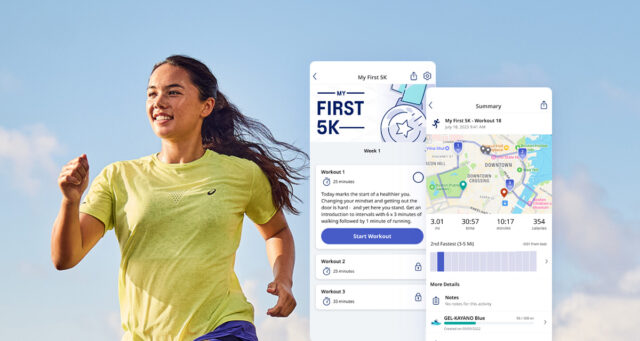Injuries are a runner’s worst nightmare, often confining you to cross-training or worse, complete rest. Statistics suggest that up to 80% of runners will deal with some degree of injury each year, ranging from minor injuries and a few days off to major injuries with a recovery period of six weeks or more. The stats may seem dire, but injuries aren’t an inevitable part of running! In fact, adding just a few proactive measures to your training routine can make a huge difference.
Whether you are dealing with plantar fasciitis or a hamstring strain, most running-related injuries stem from three primary causes: overuse, irregularities in running form, or a single accident such as an ankle roll. Unfortunately, accidents such as twists and sprains can happen to even the most diligent of athletes, but you can prevent injuries caused by overuse and biomechanical irregularities. Here are some tips that will help runners of all levels prevent injury and keep you running healthy and strong.
1. Increase your mileage gradually
Overuse injuries are the result of doing too much running too soon in your training. Your body requires time to adapt to higher training loads. Too much refers to volume (how many miles or kilometers you run, both daily and weekly), intensity (how hard a given run is), and frequency (how many days you run per week).
The common rule of thumb increases mileage by 10% every week, but that does not provide the body with enough time to adapt to higher mileage before increasing again, nor does it allow for time to increase intensity as well.
Instead of increasing your mileage by 10% each week, try this 4-week cycle for safely increasing your running mileage.
- Week 1: Increase your weekly by 10-20% by adding 1-2 miles to your long run and 1 mile to each other run. Keep most, if not all, of your runs at an easy effort.
- Weeks 2 & 3: Maintain your new mileage and add in one to two-speed workouts.
- Week 4: Reduce your mileage by 10-15% for a cutback week.
2. Improve your cadence
For years, heel striking was associated with an increased risk of injury. However, a study from Harvard Medical School determined that pounding (impact loading), not foot strike, was the culprit of many bones and soft tissue injuries. The harder a runner pounds against the ground, the higher the risk of injury.
You can reduce the risk of injury associated with pounding by working to improve your running cadence. Cadence refers to how many steps per minute you take while running. The more steps you take per minute, the less time you spend in contact with the ground and the less likely you are to pound against the ground. When you run, think about taking light and quick steps and try to land with your feet beneath you rather than in front of you.
3. Wear good (running and non-running) shoes
A properly fitting pair of running shoes is the most important piece of gear for running. You want to wear shoes that match your pronation and provide the amount of stability and support you need. Replacing shoes when they are worn out will also reduce the risk of injury (be sure to use the Shoe Tracker in the Runkeeper app to easily track wear on your shoes). If the traction is worn down on the bottom of your shoes does not feel as supportive as before, you want to get a new pair before the lack of support leads to a foot injury.
However, it’s not just the shoes you wear for the hour of the day spent running that matter. The shoes you wear to work, on errands, and in the other hours of the day can cause lower extremity injuries. High heels can irritate the calf muscles and Achilles tendon and flip flops can cause a number of biomechanical issues that will then negatively affect your running. Opt for supportive shoes with arch support if you know you will be on your feet for a long period of time.
4. Think prehab, not injury rehab
Research indicates a connection between weak and imbalanced hip and glute muscles and lower extremity injuries in runners. Why? Imbalanced hips can alter your running form and affect how your feet land. Weak glute muscles will cause other small muscles, such as the hamstrings and calves, to compensate and overwork.
By incorporating strength training for the core, hips, and glutes at least twice per week, you can reduce your risk of running-related injuries such as IT band syndrome, hamstring strains, and runner’s knee. Single leg variations of squats, bridges, and deadlifts will improve stability and correct imbalance muscles. Many of these exercises can be done using only bodyweight or simple equipment such as dumbbells, medicine balls, or resistance bands, so you can fit in your strength training from the convenience of your own home (maybe even in front of the TV!).
5. Eat well
What you eat affects not only your overall health but also your risk of running-related injury. If you live on a diet of nutrient-poor junk food or avoid eating an entire food group, you are not giving your body the calories and nutrients it needs to fuel your running and recover after a workout.
Eating to prevent injury does not require adopting a complicated or restrictive diet. Aim to eat 5-9 servings of fruits and vegetables per day in a variety of colors. These will provide vitamins, minerals, and antioxidants that will help your muscles recover well. Eat calcium-rich foods such as yogurt, cheese, and other dairy products and leafy greens to promote healthy bone density and prevent stress fractures.
6. Invest in rest days
You don’t need to run every day…nor should you! Neglecting rest causes injury because your body never gets a chance to heal from all of the miles. The recovery process is what heals the microtrauma in your muscles after each run and makes your body stronger. When you don’t let your body recover enough, your joints, bones, and muscles actually can become weaker over time.
Depending on how many days per week you run, take 1-2 days per week to rest from running and cross-training. You may choose to do yoga on these days or go for a light walk, but all activities should be low intensity and gentle.
Rest days are especially important if you are training for a long-distance race such as a marathon or half marathon. The harder you train, the more recovery your body needs. After a race, take 3-7 days off of running (if you ran a half marathon) and 1-2 weeks off (if you ran a marathon). A week off of running may seem like a long time, but the time off is well worth avoiding 2-6 weeks off if you become injured.
Read more: Why you should chill out on your recovery runs
Please note: This blog is not intended to be a substitute for professional medical advice, diagnosis, or treatment. Always seek the advice of your physician or other qualified health provider with any questions you may have regarding a medical condition.






